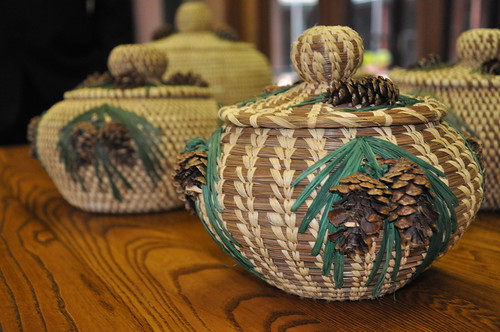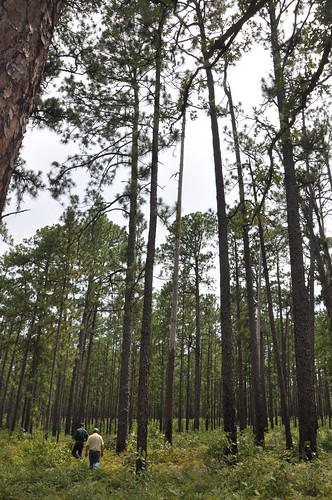
In years to come, members of the Alabama-Coushatta Tribe of Texas won’t have to travel far to gather the treasured longleaf pine needles used to make their traditional handmade baskets.
Tribal council members have enrolled upwards of 400 acres of suitable longleaf pine production land into the Wildlife Habitat Incentives Program, administered by USDA’s Natural Resources Conservation Service (NRCS). This is the first time the Alabama-Coushatta Tribe of Texas has signed a contract with NRCS as part of a Farm Bill program.
A partnership focused on reforesting longleaf pine on Tribal lands has grown over the years between the Tribe, NRCS and the Texas Forest Service. Wildlife in the area also will enjoy improved habitat due to reforestation efforts.

Carlos Bullock, Tribal Council chairman of the Alabama-Coushatta Tribe of Texas, says that longleaf pines are deeply entrenched in the Tribe’s history and their culture of making handmade baskets from the needles. Since the 1700s, the tradition and skill of making the baskets continues to be passed from one generation to the next.
Six different sites on the reservation will be reforested with longleaf pine seedlings. The smallest pine plantation is an estimated six acres, the largest about 139 acres. It is possible to plant upwards of 700 seedlings an acre.
NRCS’ role will be to provide technical assistance and guidance through the life of the five-year contract. The Texas Forest Service also will provide site management assistance. Conservation practices will include firebreaks, forest site preparation, forest stand improvement, prescribed burning and tree establishment.
An added benefit will be the restoration of native grasses, plants and wildlife habitat in the reforested areas. Tribal council vice chairman Kyle Williams says that future plans might include providing recreational activities such as hiking trails on the smaller pine plantations.
Experts estimate that only 3 percent of the original 90 million acres of longleaf pine ecosystems in the United States remain. These ecosystems are home to 29 species that are federally listed as threatened, endangered or both.
Check out more conservation stories on the USDA blog.
Follow NRCS on Twitter.



